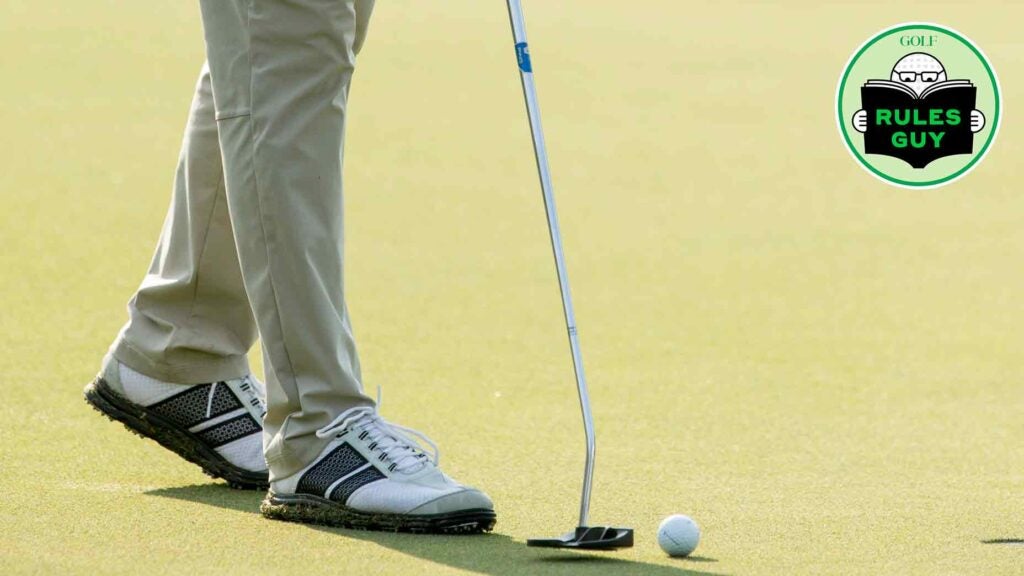The Rules of Golf are tricky! Thankfully, we’ve got the guru. Our Rules Guy knows the book front to back. Got a question? He’s got all the answers.
In a junior tournament, my son’s playing partner used his mallet putter to tamp down the grass on every green — at least a dozen times in front of the ball, another dozen at the hole and, after getting a read from his caddie, several times in between. My son complained to a Rules official. Mysteriously, the kid stopped doing it once others were watching. If this tamping isn’t okay, what’s the Rules reference? —Stephen Sipe, Yorktown, Va.
Your son’s complaint tempered his competitor’s tamping — go figure.
In short, a player is allowed to repair damage (spike/scuff marks, old ball marks, etc.) to the putting green, which, in many cases, looks like tamping down the grass.
What the player isn’t allowed to do is improve the line of play by pressing down the turf when not repairing damage. Do that and it’s the general penalty for improving the conditions affecting the stroke. The key point is that there needs to be an improvement; tamping itself doesn’t result in a penalty unless the player actually alters the condition and creates a potential advantage by doing so.
Here is the middle paragraph of Rule 13.1c(2): “But if the player improves the putting green by taking actions that exceed what is reasonable to restore the putting green to its original condition (such as by creating a path-way to the hole or by using an object that is not allowed), the player gets the general penalty for a breach of Rule 8.1a.” If there’s a dispute, the Committee will have to evaluate the evidence and make a determination.
For more guidance from our guru, read on …
A friend’s ball came to rest atop an area where the maintenance staff had dumped greens plugs from a recent course aeration. Beneath the plugs, in an area normally considered rough, was washed-out hardpan. At first, my friend asked to take relief for ground under repair, but it wasn’t marked as such — and I suggested, sincerely, that his existing lie was quite good and not likely to improve with a drop. He agreed but then decided to remove some plugs from behind the ball, leaving the ball resting in its original spot but now perched up. His justification for removing the plugs was the loose impediment rule. That seemed reasonable — but can removing loose impediments be considered a rules violation for improving your lie? Also, despite the lack of signage, could it ever have been legal to take a drop for ground under repair? —John Harkins, Raleigh, NC
Keep friends with this one — he’s a wise guy.
Not only was he right about the aeration plugs being loose impediments but also that he could remove them in any way so long as the ball stayed put.
Rule 8.1 specifically states that it doesn’t apply to removing loose impediments, and so even if the lie becomes better as a result (and isn’t that really the point of removing loose impediments?) there is no penalty so long as the ball isn’t moved in the process.
As far as the drop goes, that depends: If the aeration plugs were piled for later removal, then the pile itself was by definition ground under repair and free relief permissible. If the plugs were in their final home then, no, free relief wasn’t allowed.
Need help unriddling the greens at your home course? Pick up a custom Green Book from Golf Logix.
Got a question about the Rules? Ask the Rules Guy! Send your queries, confusions and comments to rulesguy@golf.com. We promise he won’t throw the book at you.

